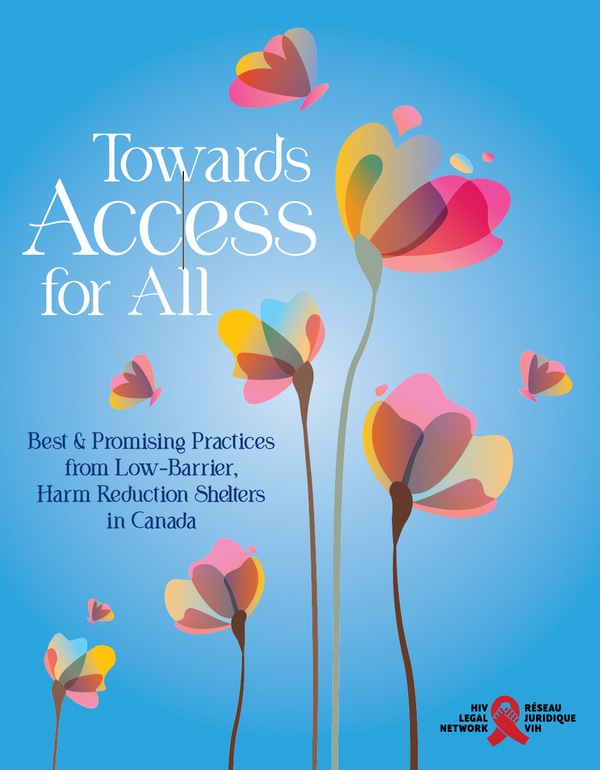Towards access for all: Best and promising practices from low-barrier, harm reduction shelters in Canada
The Right to VAW Shelter Access
The outright refusal to serve women and gender-diverse people who use drugs in the shelter setting will often amount to discrimination in provincial and territorial human rights legislation. The denial of shelter because of drug use likely also breaches Canadian Charter of Rights and Freedoms rights to life, liberty, and security of the person and to freedom from discrimination. Service providers, including shelters, must make efforts to accommodate people who use drugs, up to the point of undue hardship.
Canada’s international human rights obligations further affirm the right to VAW shelter access for people who use drugs. Under the Convention on the Elimination of All Forms of Discrimination against Women, differential treatment on the basis of drug use is recognized as increasing vulnerability to VAW, which is in turn considered a form of prohibited discrimination. States that do not act to combat VAW because of a person’s drug use can be held responsible for VAW. Accordingly, United Nations bodies have consistently urged states to ensure that their VAW shelters are accessible to women who use drugs.4
The following steps would enable shelters to accept far more women and gender-diverse people who use drugs, to expel far fewer, and ultimately to save lives:
1. Maintaining Low-Barrier Admissions
Whether it be on admission or through their website, accessible shelters communicate clearly and publicly that they do not bar access to women and gender-diverse people who use drugs. Instead, they communicate that they embrace harm reduction, they do not judge or punish drug use, and their primary goal is to support participants wherever they are.
2. Creating Flexible and Participant-Centred Expectations
Accessible shelters move away from the punitive rules and policing the behaviour of individuals. Instead, they create and communicate expectations for shelter participants based on safety, independent of drug use, with the aim of working with, rather than for, shelter participants.
3. Fostering a Safe and Trusting Environment
Low-barrier shelters foster safe and trusting environments, in which all women and gender-diverse people feel welcome. A trusting environment involves:
(a) staff trained in harm reduction and who adopt harm reduction values;
(b) opportunities for staff and participants to learn from each other;
(c) valuing the voices of people with lived experiences, including appropriately compensating the work of peer support workers; and
(d) promoting safety proactively, and reducing reliance on state authorities.
4. Recognizing Women’s Intersecting Identities
Low-barrier shelters recognize women’s individual experiences and provide supports that reflect the unique harms experienced by those with intersecting identities. For instance, they work with Indigenous people to dismantle and decolonize their practices and organizations, work with racialized communities (including newcomers) to address cultural and language barriers, and work with people of diverse gender identities to better understand and support them.
5. Providing Comprehensive, Non-Judgemental Harm Reduction
Low-barrier shelters provide comprehensive, non-judgemental harm reduction supports, including supplies (such as sterile injection and inhalation supplies, biohazard containers for safe sharps disposal, safer-sex supplies, drug-checking strips, and naloxone kits), safer-use education, staff training on harm reduction, overdose prevention and response strategies, peer supports, and referrals to supplementary services. Where resources are a limitation, low-barrier shelters partner with community services.
Downloads
Regions
Related Profiles
- Women and Gender Equality Canada
